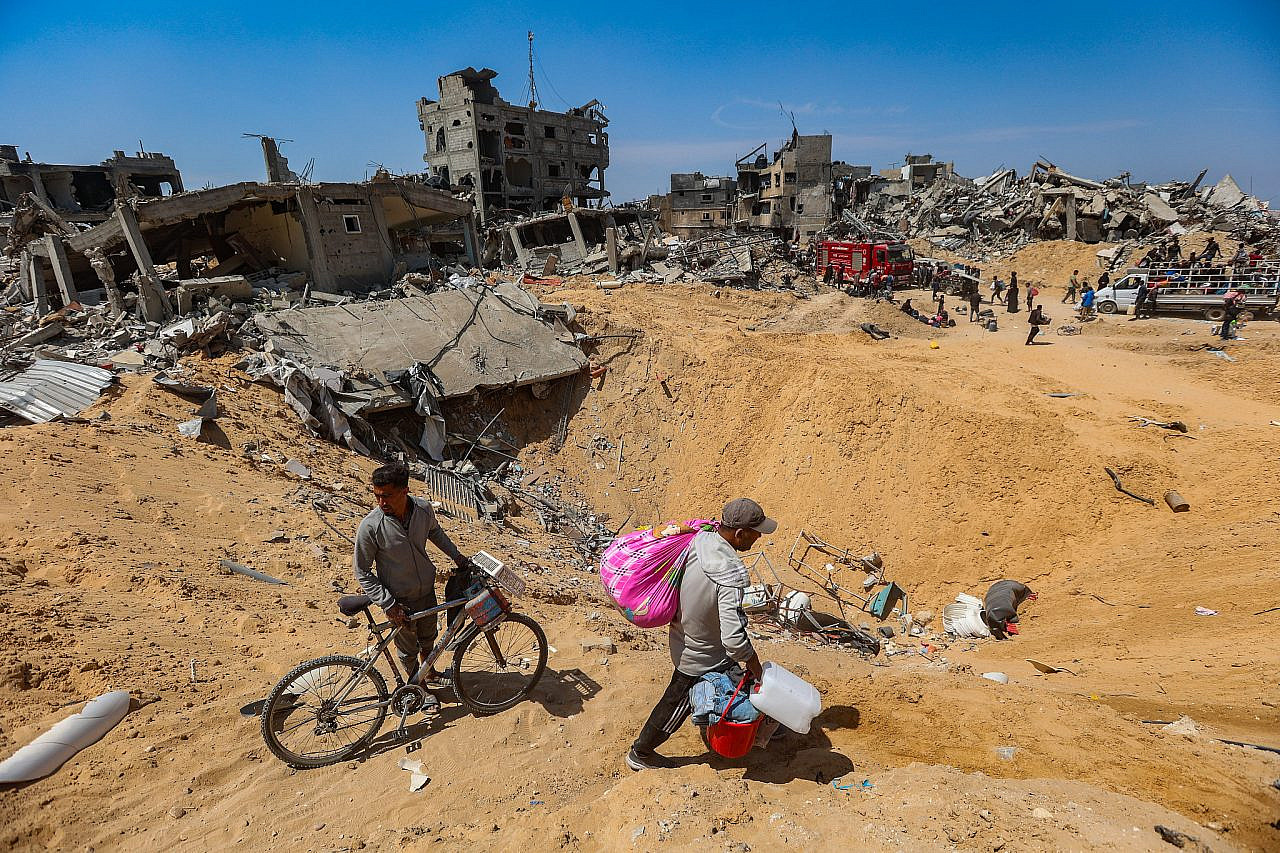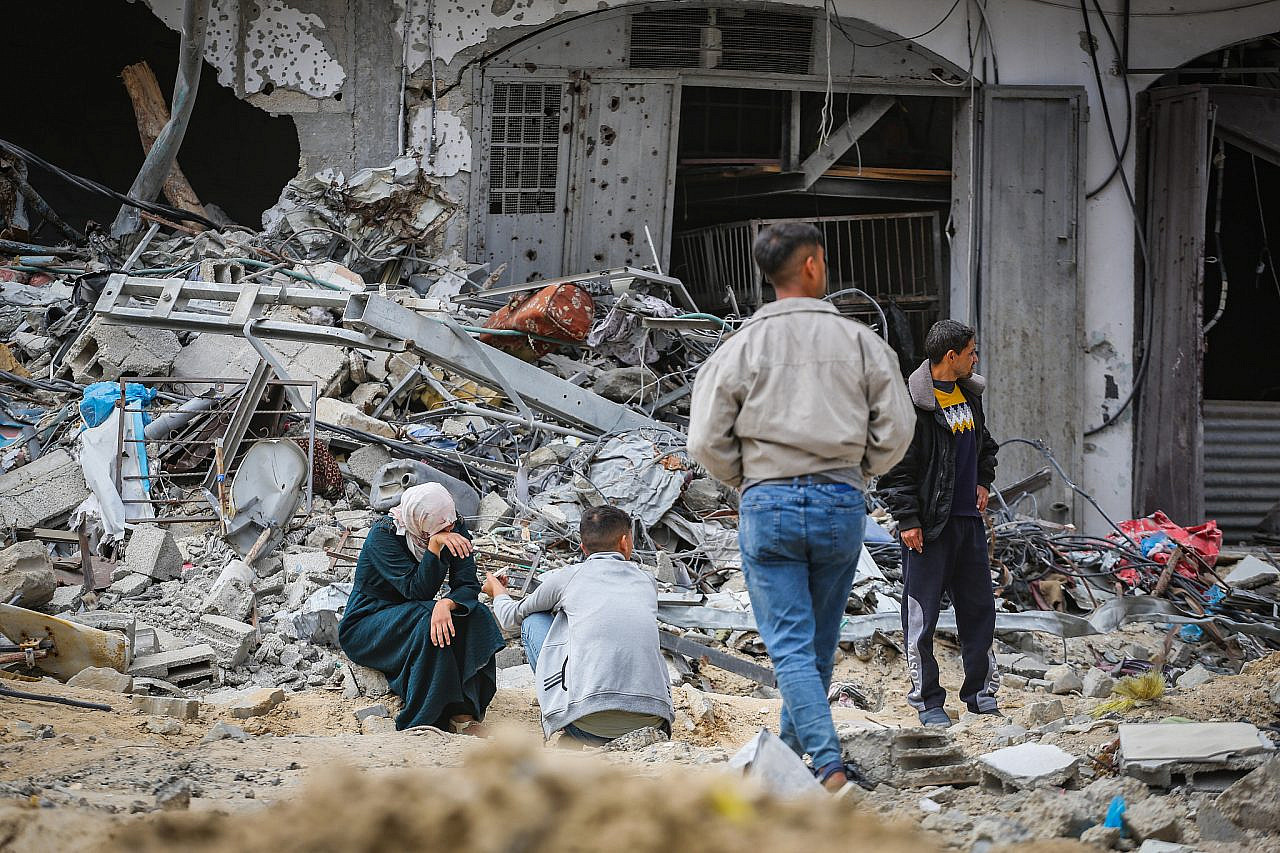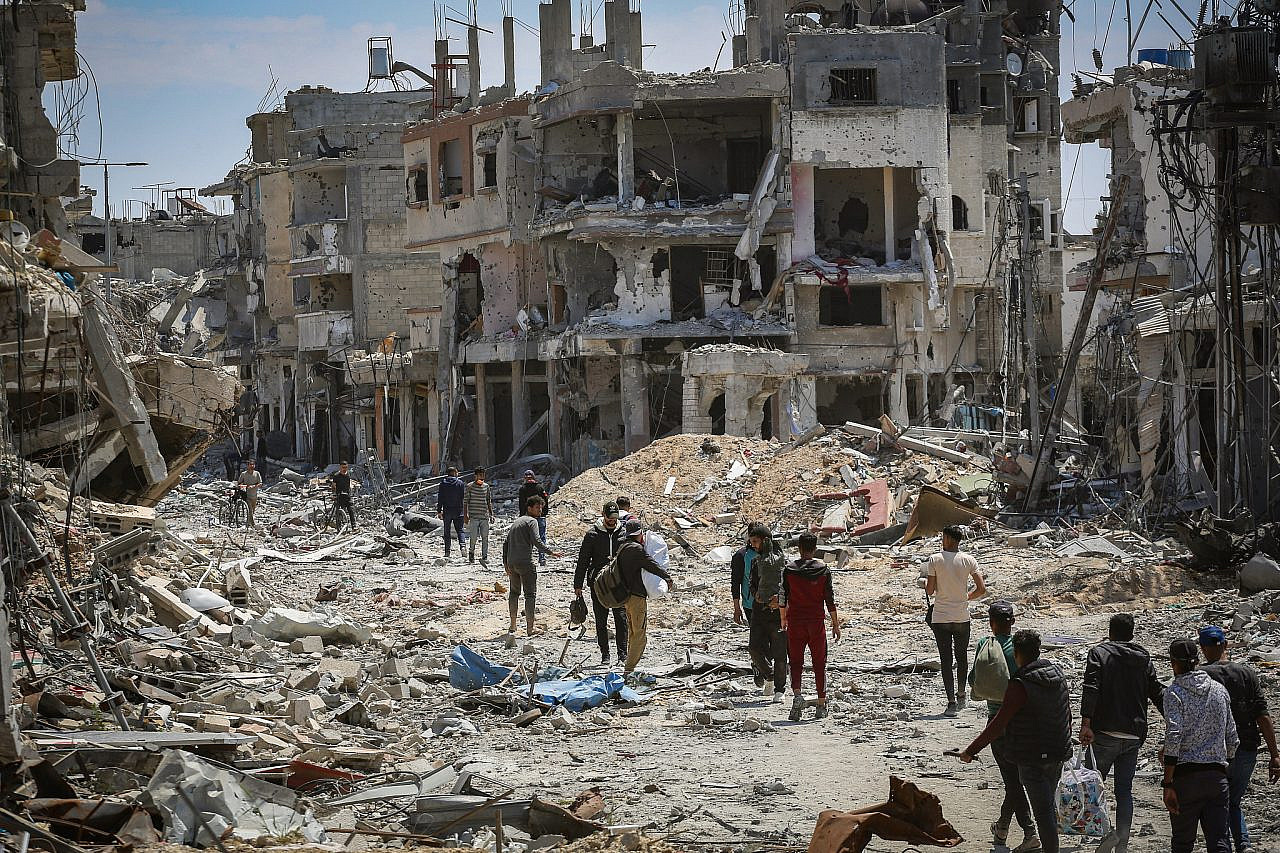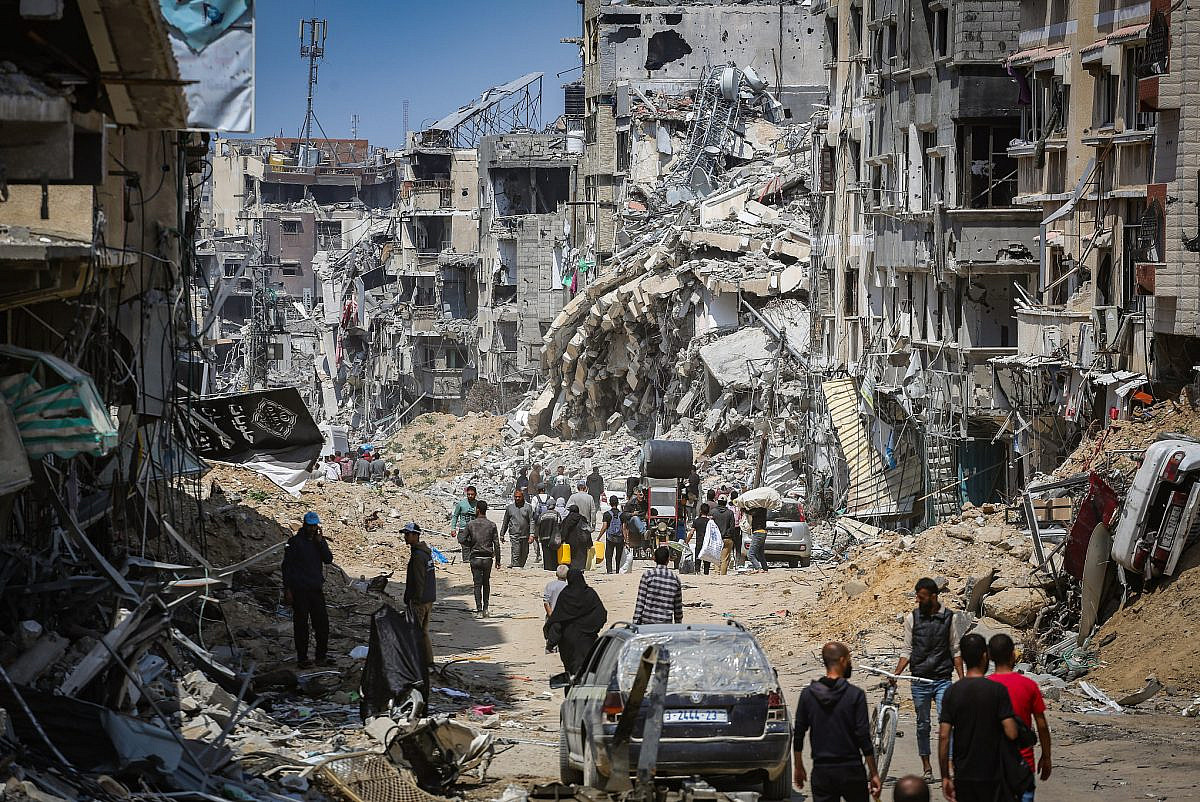Thousands of Palestinians have returned to the city of Khan Younis in recent days after the sudden withdrawal of Israeli forces on Sunday. What awaited them was a scene of total devastation, such that many were unable to even recognize their old homes and streets. Entire neighborhoods have been decimated by bombing, shelling, and bulldozing, leaving barely a trace. Khan Younis is now a city of rubble and ash.
Before the war, the city and its surroundings were home to approximately 400,000 people, making it the Gaza Strip’s second largest municipal area after Gaza City. That number more than doubled within the first weeks of the war, as Israel ordered all residents of the northern Strip to evacuate southward, even as it kept bombing Khan Younis. When Israeli troops fully besieged the city in early February, many Palestinians were forced to escape through a so-called “safe corridor,” which entailed abuse and humiliation for those who made the journey.
With the army vacating Khan Younis in recent days, the city’s former residents were eager to return after two months or more to see what was left of it. Walking the once bustling and now virtually indiscernible streets, many were shocked by what they found.
“I am a son of this city, but I no longer recognize its streets,” Ahmed Suleiman, a 35-year-old from Khan Younis refugee camp, told +972 Magazine. “I arrived at the Bani Suhaila roundabout [one of the city’s main intersections] and saw great destruction, just a pile of sand — it looked like a desert.”

Suleiman, who has been seeking refuge in Rafah after fleeing Khan Younis, described what he found when he reached the refugee camp: “All the single-storey houses were entirely gone, leaving only houses with several floors which showed severe damage from shelling and burning. When I arrived at my apartment building, the door had been destroyed and some of the windows were burned and broken. I entered the building and checked one floor after the other. They were all completely charred. My apartment is on the fourth and final floor; looking at it from the street, I hoped that it might be fine. But when I got there, I found a lot of damage.
“I began to remember the moments I had with my children in this house,” he continued. “I searched a lot for my children’s toys so I could bring them back something from home. I found only a few, some of which were burned and others broken. I took what I could and gave them to my children.”
While inspecting his home, Suleiman met with several of his neighbors who had also returned to see the damage. “Many of them were in a state of shock and sadness from the severe destruction,” he said. “We were asking, Whose house is this? Where did that shop go? How do we find that street? When I saw videos of the city on social media, I would say that the destruction was not that bad. But the reality is different. It’s very scary. You feel that you are in a painful nightmare.
“The city has become gray from the destruction and rubble,” Suleiman went on. “The colors and joy of the city have unfortunately disappeared. I don’t know how I will return with my children and live here without a home. My apartment is completely destroyed. There is no infrastructure in the area. I will wait a little until some of the basics of life return to the city, then I will put up a tent next to the house until it is rebuilt.”

‘The streets have turned to sand’
“The city looks like a wilderness area now,” Hanadi Al-Astal, 40, told +972 upon her return to the Khan Younis. She fled the city in December, relocating to the nearby European Hospital where she and her husband work, along with their five children.
“Every day I used to say that I would return to my home soon,” she said. “I was waiting for the moment the army withdrew, so I went with great eagerness after they left on Sunday. I was praying that it would be fine, that I would be able to sleep in my home once again. But while walking along the road, I found great destruction. The streets have turned to sand. I could see some remnants of the petrol station, but it has been completely bulldozed.
“When I approached my house, I saw horrific destruction, and I became very afraid of what I would find inside,” Al-Astal continued. “I was shocked. I entered the house and found it burned. There were no rooms left. The kitchen was burned in its entirety. I searched in what was my children’s room for their clothes and anything useful that I might find. I cried a lot. My heart was burning with all this destruction. I couldn’t believe it. Khan Younis has become a nightmare. It is not fit for life at all.”
When Al-Astal returned to the European Hospital with the few items of clothing that she had managed to recover, her daughter was overjoyed. “She was very happy with them, as if they were new clothes that she was seeing for the first time,” she recounted. “They were her clothes that she used to wear a lot, but she was losing hope of ever seeing them again. She asked me to look for some more of her things, but I don’t know if I will be able to go there again. The house is not suitable for living in.

“My head will explode from thinking about the future,” Al-Astal added. “I don’t know what we will do. Will we go back and put a tent there? Will I travel outside Gaza? I need a lot of money to be able to leave. I don’t know what we’re going to do.”
Mamdouh Khader, 33, said that when he returned to Khan Younis after a two-month displacement in Rafah, he walked around for three days in order to see as much as he could of what remained. “I could not believe the destruction I saw,” he told +972. “Many landmarks were removed from the city. My neighborhood was completely destroyed; it was a mountain of rubble. I could not find my house.
Most read on +972
“There was a playground opposite our house that had been completely bulldozed and became mountains of sand,” he continued. “I searched for the mosque next to our house, and it was a pile of rubble due to the bombing that hit the area. I walked toward Nasser Hospital along a sandy street, which had been bulldozed, and sand covered the gates of the schools next to the hospital. The cemeteries behind the hospital had also been bulldozed. I was walking around and asking, What is this area? Where is that place?
Despite the vast destruction, Khader is determined to return to live in the neighborhood that was once his home. “I was very tired during my displacement in Rafah, waiting to return to my city at every moment,” he said. “Unfortunately, the occupation has distorted this beautiful city. I do not know how it will rise again and return to its vitality. The destruction is enormous and cannot be described in words. But I will wait for the water lines to be extended in the area, and I will put up a tent and sleep in it with my children.”




